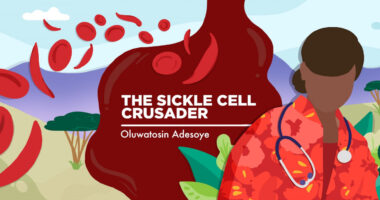Companies to Seek BLA Approval of Gene-editing Therapy for SCD
Vertex, CRISPR cleared for rolling submission of exa-cel to FDA

Vertex Pharmaceuticals and CRISPR Therapeutics are planning a November launch for a biologics license application (BLA) for their gene-editing therapy exagamglogene autotemcel — known as exa-cel — seeking its approval for the treatment of sickle cell disease (SCD) and transfusion-dependent beta thalassemia.
The U.S. Food and Drug Administration (FDA) cleared Vertex and CRISPR to begin a rolling submission of exa-cel’s BLA — a formal request therapy manufacturers make for regulatory approval to introduce a new biologic product in the market.
That submission is planned to begin this November, with completion likely to occur by the end of the first quarter of 2023.
“We are pleased to have concluded our exa-cel pre-submission meetings with regulators and are excited that FDA has granted a rolling review,” Nia Tatsis, PhD, executive vice president and chief regulatory and quality officer at Vertex, said in a press release.
A rolling submission means the companies can submit sections of the application for review as soon as they are ready, rather than waiting until each and every section is complete prior to submission, as is typically done.
CRISPR and Vertex gained access to this type of review after they met with the FDA as part of a fast track program that aims to speed a therapy’s development and get it to patients sooner.
SCD and beta thalassemia are two genetic diseases that occur when the body makes either a faulty version of hemoglobin, or none or too little of it. Hemoglobin is the protein in red blood cells that is responsible for oxygen transport.
Not having enough proper hemoglobin causes anemia, which occurs when there is a shortage of red blood cells in the blood.
Exa-cel in clinical trials
Exa-cel, formerly known as CTX001, uses hematopoietic stem cells, or blood cell progenitors, that are taken from a patient’s own peripheral blood. These cells are modified in the lab in such a way that they make high levels of fetal hemoglobin. This version of hemoglobin, produced during fetal development, is more effective at carrying oxygen than its adult counterpart.
When these cells are given back to the patient, in the form of a stem cell transplant, they are expected to drive the production of fetal hemoglobin. This in turn is expected to help ease anemia, lower the need for blood transfusions, and reduce the frequency of painful vaso-occlusive crises (VOCs) that occur in SCD.
The modification is made with the aid of the gene-editing tool CRISPR/Cas9. It uses an RNA molecule that guides an enzyme to a specific point in the DNA sequence of a gene of interest. The enzyme cuts open the DNA sequence at a specific point and removes some of its building blocks.
In exa-cel, this is done in a gene that provides instructions to make BCL11A, a protein that shuts off the production of fetal hemoglobin some time after birth. The modification stops BCL11A from being made, turning the production of fetal hemoglobin back on.
The therapy is being tested in multiple clinical trials as a potential one-time therapy for patients with either SCD or beta thalassemia.
“We continue to work with urgency to bring forward the first CRISPR therapy for a genetic disease, and one that holds potential to transform the lives of patients with sickle cell disease or beta thalassemia,” said Tatsis.
Data from an open-label Phase 1/2/3 clinical trial, called CLIMB–121 (NCT03745287), showed that a single dose of exa-cel increased the levels of fetal hemoglobin and prevented VOCs in SCD patients. The ongoing trial, now fully enrolled, involves patients ages 12–35 with severe SCD.
The reported side effects were consistent with those of busulfan, a medicine that is used as part of a conditioning treatment regimen carried out in preparation for the stem cell transplant.
A similar clinical trial, CLIMB–111 (NCT03655678), is evaluating the safety and efficacy of one-time exa-cel in patients with beta thalassemia of about the same age.
Two other open-label Phase 3 clinical trials — CLIMB–151 (NCT05329649) and CLIMB–141 (NCT05356195) — are enrolling patients ages 5–11 with SCD or beta thalassemia at two locations in the U.S. and Italy. There are plans to extend recruitment to patients as young as age 2 at a later date.
All patients who participated and received exa-cel in any of these clinical trials will have the chance to enter CLIMB-131 (NCT04208529), a follow-up study that will evaluate the long-term safety and efficacy of the therapy for up to 15 years.
In addition to fast track status, exa-cel received regenerative medicine advanced therapy (RMAT) and orphan drug designations from the FDA.
By the end of this year, the companies plan to submit an application requesting marketing approval of exa-cel in Europe. The therapy holds orphan drug status from the European Commission and priority medicines (PRIME) designation from the European Medicines Agency.







